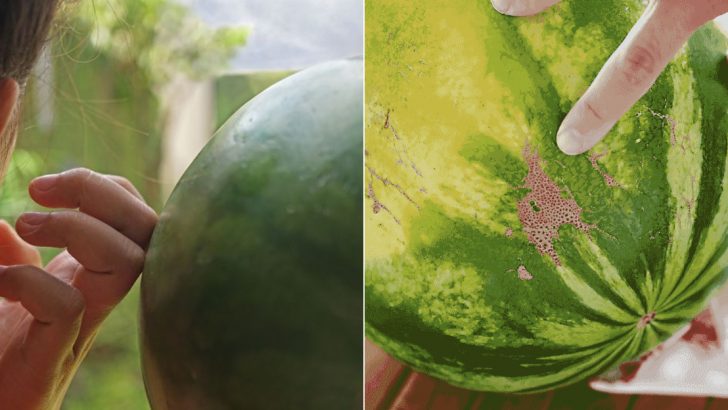Watermelon season brings the promise of juicy, refreshing treats, but standing before a mountain of green orbs can feel overwhelming! How do you avoid bringing home a dud?
Fear not, fellow melon enthusiasts – I’ve gathered insider knowledge from farmers and produce experts to help you become a watermelon-picking pro.
Forget random thumping and follow these fail-proof techniques instead!
1. Look For The Field Spot
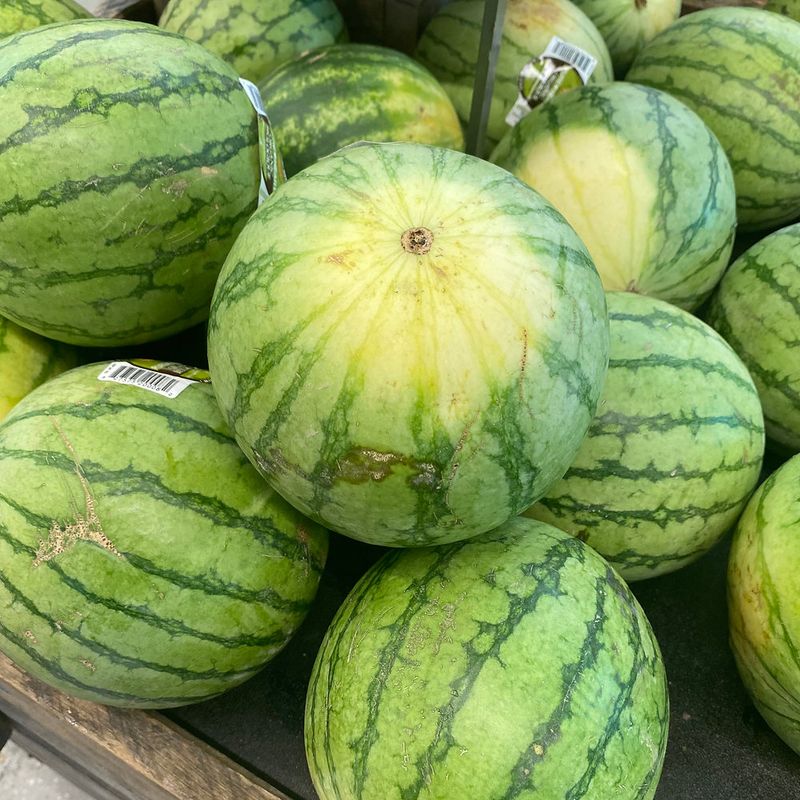
Yellow, not white! The patch where your watermelon rested on the ground while growing reveals crucial ripeness secrets. A creamy, buttery yellow spot signals sweet perfection.
Ever noticed those discolored patches? They’re nature’s ripeness indicators! White or pale spots mean the fruit was harvested too soon. Share this golden rule with your summer picnic pals!
2. Tap And Listen For The Right Sound
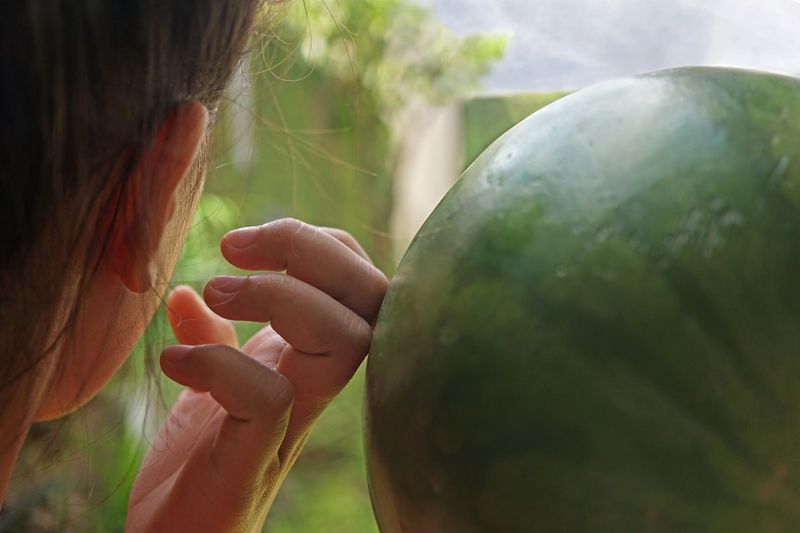
Forget what you’ve heard about thumping randomly! A ripe watermelon produces a deep, hollow sound—like knocking on a door—not a high-pitched ping.
What if I told you deaf farmers rely entirely on vibration feel instead? Try holding the melon close while tapping to feel those good vibrations. Could your next perfect watermelon be just a knock away?
3. Seek Out Bee Stings
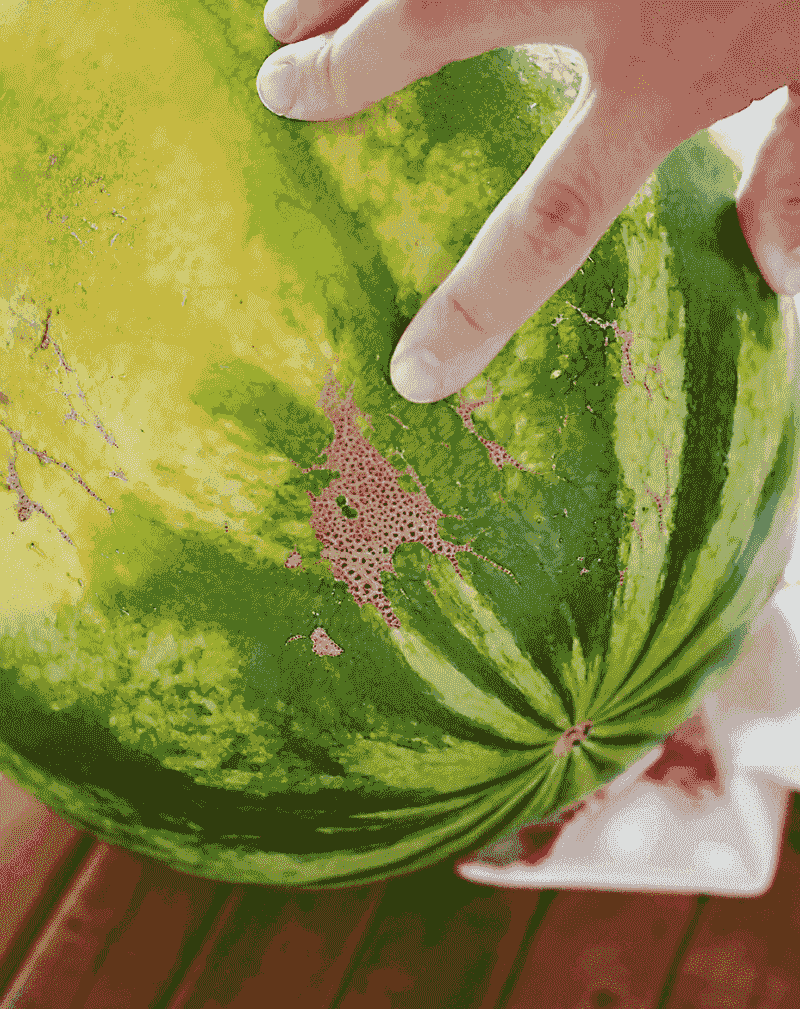
Those tiny brown scars scattered across the rind? They’re actually sugar spots where bees attempted to reach the sweetness inside!
Hence, more bee stings generally indicate higher sugar content. Though they might look like imperfections, these natural markings are treasure maps leading to flavor paradise. Would you believe some farmers consider these nature’s seal of approval?
4. Check The Weight-To-Size Ratio
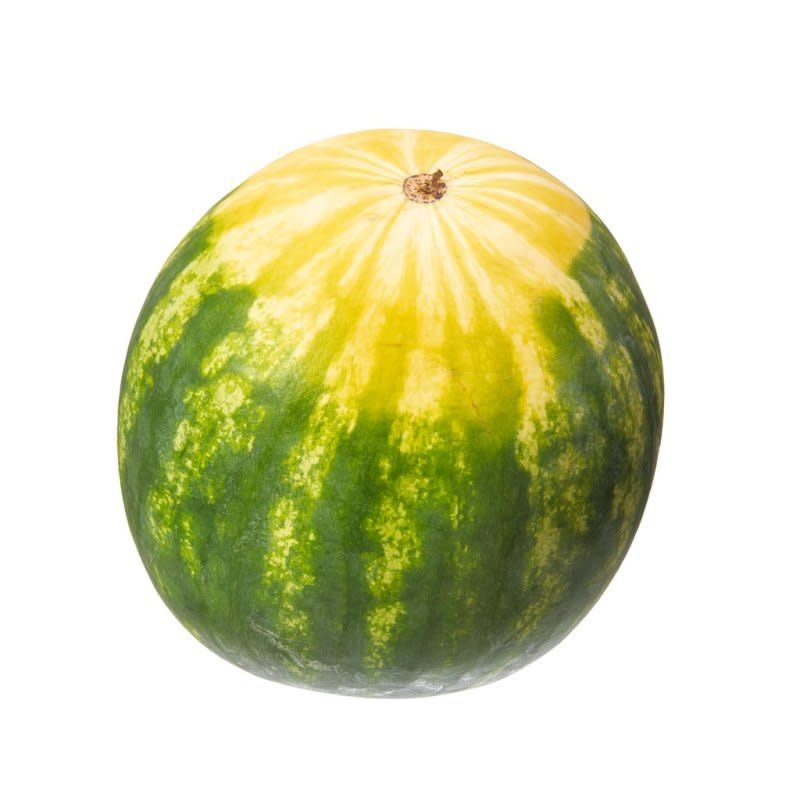
Heavy for its size? That’s watermelon gold! A disproportionately heavy melon means it’s packed with juice and at peak ripeness.
If comparing two similar-sized melons leaves you puzzled, always grab the heavier contender. Surprisingly, a ripe watermelon is 92% water, making weight an excellent ripeness indicator. Ready to impress everyone at your next cookout with this weighing wisdom?
5. Examine The Webbing Pattern
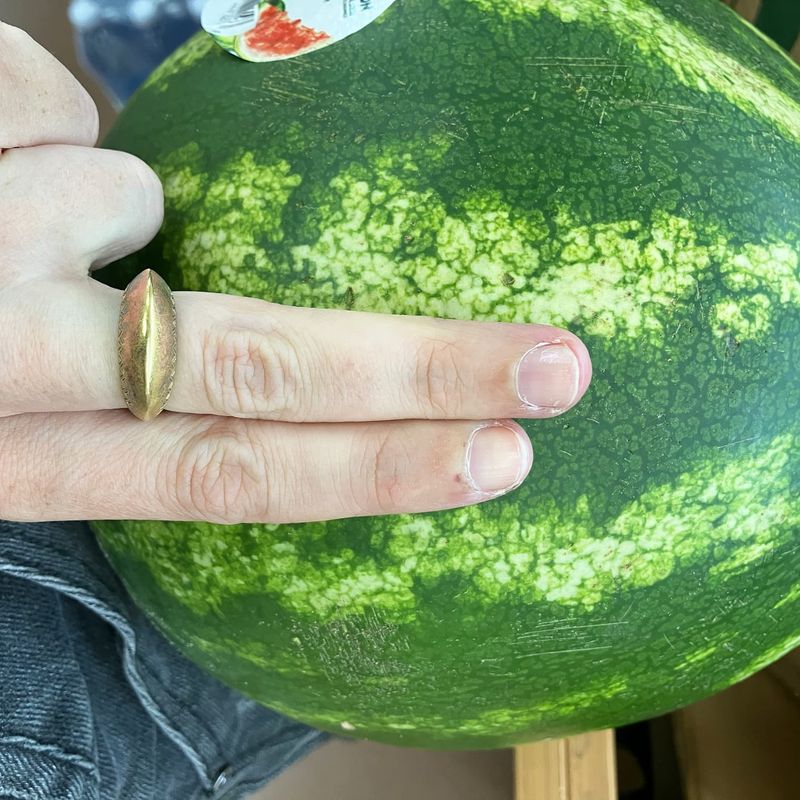
Brown, web-like patterns across the rind? Jackpot! These sugar lines indicate the watermelon has received optimal pollination and developed maximum sweetness.
How fascinating that bees leave their mark in more ways than one! The more intricate the webbing, the sweeter your juicy prize will be. Many watermelon aficionados consider this feature the ultimate sweetness predictor!
6. Inspect The Tail’s Condition
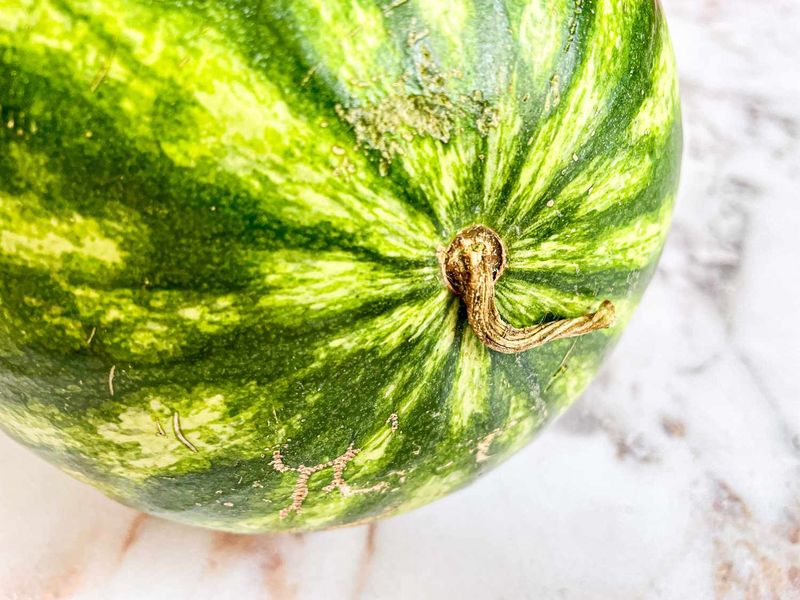
Dried-out, brown stem? You’ve struck watermelon gold! A green, fresh stem indicates the fruit was harvested before reaching peak ripeness.
Though counter-intuitive, that withered tail proves the watermelon ripened naturally on the vine before harvesting. Where do you usually look first when selecting your summer treat? Perhaps this tail-tell sign deserves your initial attention!
7. Analyze The Shape Factor
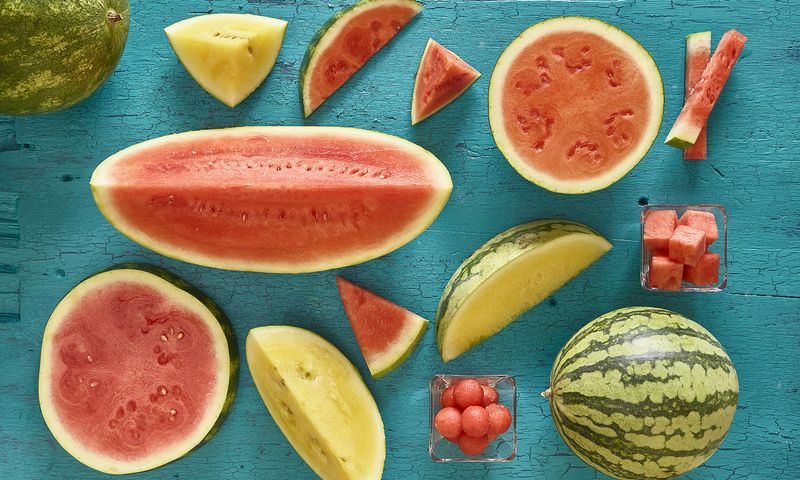
Perfectly round melons might look pretty, but slightly oblong ones often deliver superior flavor! Female watermelons (rounder) tend to be sweeter, while male ones (more oblong) are watery.
Wait—watermelons have genders? Not technically, but farmers use these terms to distinguish varieties! The shape differences actually relate to pollination conditions and variety characteristics. Got a preference between round and oblong? Let the flavor debate begin!
8. Feel The Rind Texture
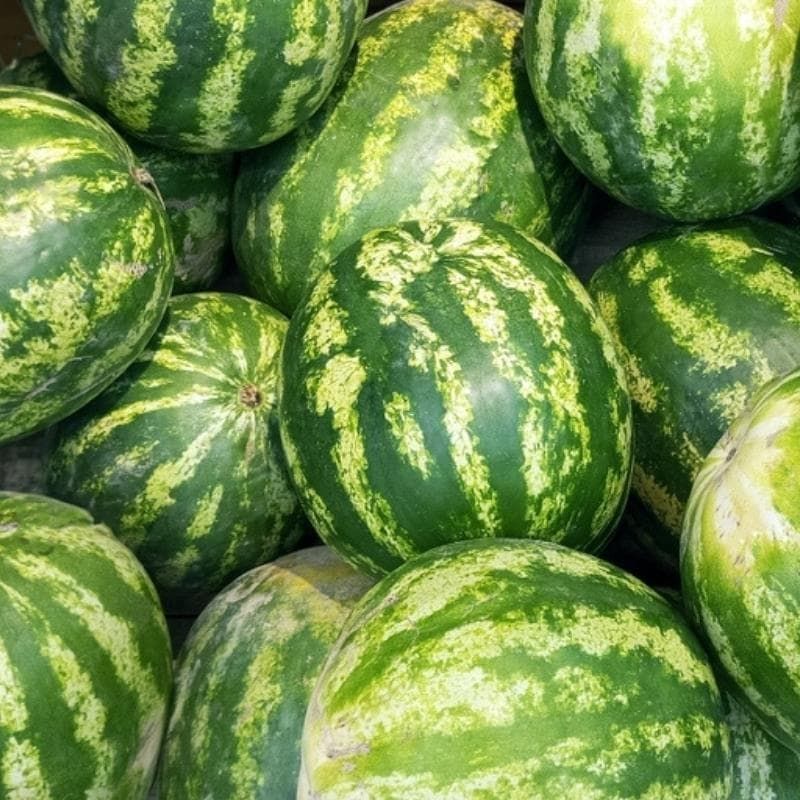
Smooth and shiny? Keep looking! A ripe watermelon develops a slightly rough, matte surface as it matures.
Run your fingers across that green exterior—the subtle texture difference separates amateur pickers from pros!
However, don’t confuse roughness with toughness; the rind should still have some give when pressed firmly. Wouldn’t you love to amaze friends with this tactile selection technique?
9. Mind The Size-Flavor Balance

Bigger isn’t always better! Medium-sized watermelons often pack more concentrated flavor than their giant counterparts.
Gigantic specimens might impress at picnics, but savvy melon connoisseurs know moderation yields tastier results. Though exceptions exist, aim for that Goldilocks zone—not too big, not too small. Can you resist the allure of those massive melons now?
10. Trust Seasonal Timing

Peak season produces peak flavor! In North America, July through August delivers the sweetest, most perfectly ripened watermelons.
Why gamble on off-season specimens when patience rewards with superior taste? Early or late-season melons often disappoint because they’re harvested prematurely to meet demand. Mark your calendar for mid-summer watermelon hunts and taste the difference that perfect timing makes!

